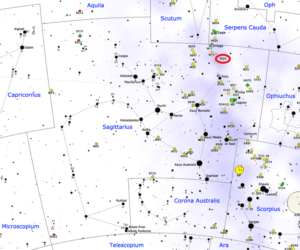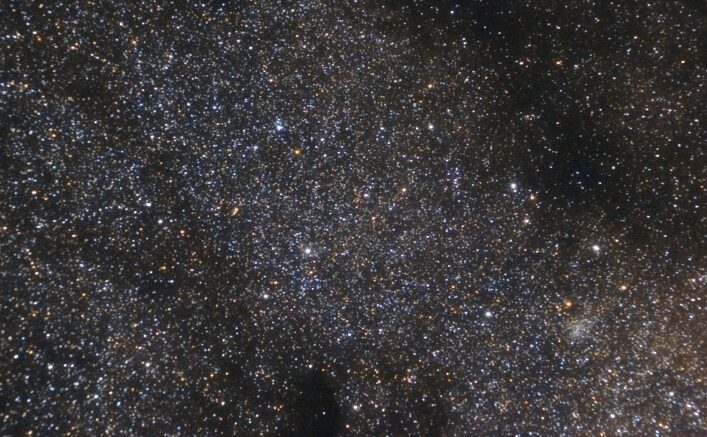Messier 24, otherwise known as the Sagittarius Star Cloud, is an absolutely massive star cloud. It is claimed that viewing M24 through binoculars provides the observer with “the densest concentration of individual stars that can be seen in binoculars.” Regardless of if true, Messier 24 covers about 4 degrees of sky or the width of 8 full moons. Messier 24 is 1 of 3 Messier objects that are not deep sky objects, with the other 2 being Messier 40 and Messier 73. Unlike most Messier objects are mostly single, well defined deep sky objects, Messier 24 a collection of millions of stars found along the plane of the Milky Way and seen through a gap in the galaxy’s dust lanes.
| Description | |
| Visible From Pacific Northwest | June, July and August |
| Best Time To Observe | June, July and August |
| Minimum Size Of Viewing Device | Binoculars |
| Object Type | Milky Way star cloud |
| Designations | Messier 24, M24, IC 4715, Sagittarius Star Cloud, Small Sagittarius Star Cloud, Delle Caustiche |
| Right Ascension | 18h 17m |
| Declination | -18°29′ |
| Constellation | Sagittarius |
| Age | 220,000,000 years |
| Apparent magnitude | 4.6 |
| Apparent dimensions | 90′ |
| Object Radius | 300 light years |
| Distance From Earth | 10,000 light years |
History
Charles Messier included the Sagittarius Star Cloud in his catalogue on June 20, 1764, describing it as “a large nebulosity in which there are many stars of different magnitudes.”
In 1905, Irish astronomer Agnes Mary Clerke provided an explanation for M24’s other name, Delle Caustiche, noting that it was given to the object by the Italian astronomer and astronomical spectroscopy pioneer Father Pietro Angelo Secchi. Clerke wrote, “Visible to the naked eye as a dim cloudlet near Mu Sagittarii and named by Fr. Secchi as ‘Delle Caustiche’ from the peculiar arrangement of its stars in rays, arches, caustic curves and intertwined spirals.”
Locating M24 In The Sky
Messier 24 can be found 4 degrees north of Polis, Mu Sagittarii, the bright blue giant star above the Teapot asterism, or 7 degrees north and a little west of Kaus Borealis, the star that marks the top of the Teapot. The star cloud can also be located by extending the line from Kaus Australis to Kaus Media to the north.

Viewing M24
Messier 24 is the densest concentration of individual stars that can be seen in binoculars. About 1,000 stars are visible in a single field of view. The star cloud is best seen in binoculars and telescopes with a field of view of at least 2 degrees, at low magnification. Even small telescopes will resolve a large number of stars in different patterns. The open cluster NGC 6603, which lies in the brightest part of the cloud, can be seen in 4-inch and larger instruments.
Please note that it can be said that a part of the mystique of the cloud is lost in medium and large size scopes, since it’s too large for the eyepiece field of view. Nevertheless, through a 200mm, 8-inch, scope it’s still a fascinating sight with hundreds of stars visible, intertwined with nebulosity and complex dust lines.
Photographing M24
There are some guides to taking photos of the Sagittarius star cloud, but these are more specific to the photos that these people have taken. What has been found to be available, it seems that 2 minute exposures really work well to capture the object in its full glory! Amazingsky.net shows that a 135mm lens and a Canon 7d can be enough to get some great shots, assuming that there is excellent tracking. There is a cloudynights forum and some great astrobin shots that will be available.
Sources And Further Reading
Descriptions of all of Messier Objects can be found here.
https://freestarcharts.com/messier-24

Be the first to comment on "Messier 24 Sagittarius Star Cloud"